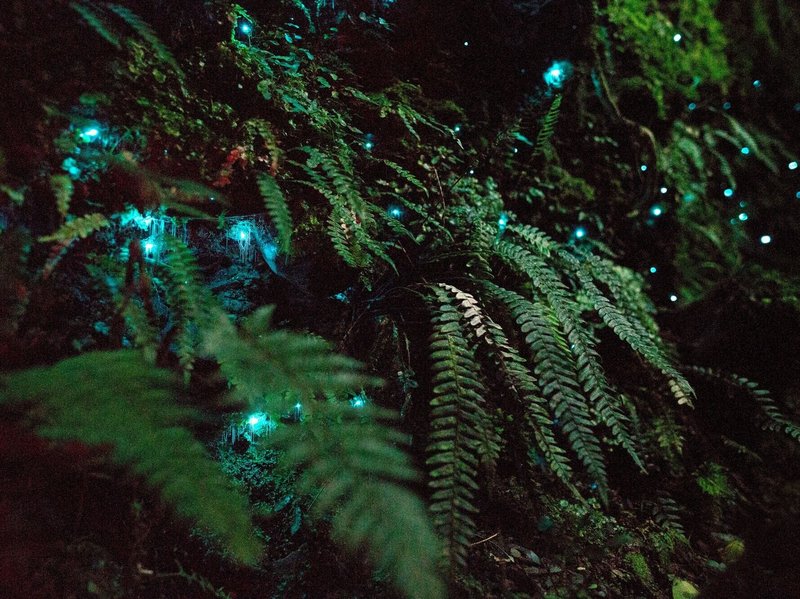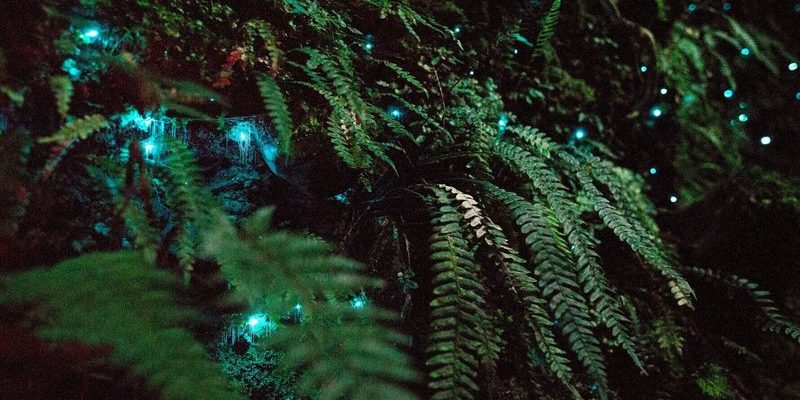
Understanding how glow worms and moisture interact can give us crucial insights into forest ecosystems. As moisture affects their growth and reproduction, these tiny lights can also act as indicators of environmental health. In this article, we’ll explore the connection between glow worms and moisture levels in forests, uncovering the secrets of these bioluminescent creatures and what they tell us about their surroundings.
What Are Glow Worms?
You might be surprised to learn that the term “glow worm” can refer to different species. Most commonly, it describes the larvae of certain beetles, especially those in the *Lampyridae* family. These fascinating insects are not actually worms at all! Instead, the glow comes from a chemical reaction in their bodies, creating a beautiful blue-green light. Imagine the thrill of spotting one glowing softly in the undergrowth on a cool night—it’s quite magical!
Glow worms are typically found in damp, dark environments like forests, caves, and even near streams. They spin silk threads that hang vertically in the air, catching unsuspecting insects that are attracted to their glow. The catch? It’s a survival mechanism. The light serves to lure prey and ultimately sustain the glow worm until it matures into an adult. Here’s the thing: without sufficient moisture in their environment, these insects struggle to thrive.
The Role of Moisture in Forest Ecosystems
Moisture levels in forests are vital for the overall health of the ecosystem. Forests are like sponges; they absorb water and store it, supporting a wide range of plants and animals. Think of the trees as big water reservoirs that not only provide shelter and food but also influence the moisture levels in the surrounding air. When the moisture is just right, trees thrive, and so does the wildlife that calls the forest home.
Humidity plays a big role in the moisture levels we see. Without enough humidity, many organisms, including glow worms, face challenges. Too little moisture can lead to dry conditions, making it tough for insects to survive. As forests lose moisture, they can become less stable, affecting everything from plant growth to animal populations. You might be wondering how all this connects back to glow worms. Well, their presence—or lack thereof—can indicate changes in humidity and moisture levels.
How Moisture Affects Glow Worms
Let’s dive deeper into how moisture precisely impacts glow worms. These insects thrive in environments with high humidity, where the air is laden with moisture. Under dry conditions, glow worms can face a range of problems. For instance, a lack of moisture can lead to dehydration, affecting their ability to glow effectively or even reproduce.
Moreover, cooler, damp areas provide an ideal habitat for their silk threads to catch prey. If the environment is too dry, the silk becomes brittle, leading to fewer capture opportunities. Here, we see a perfect example of how moisture doesn’t just help glow worms but also shapes their entire life cycle. When conditions are favorable, they light up the forest like tiny stars, contributing to the beauty and biodiversity of their habitat.
Glow Worms as Environmental Indicators
Glow worms aren’t just pretty lights; they’re also important indicators of environmental health. When scientists study glow worm populations, they can gauge the moisture levels and overall health of their forest habitats. A decline in glow worm numbers can signal that something might be off in the ecosystem, often due to changes in moisture content.
For example, if a forest undergoes deforestation or changes in land use that decrease humidity, glow worm populations can dwindle. By monitoring these little creatures, researchers can track the health of forests over time. It’s a fascinating way to connect the dots between tiny organisms and large-scale environmental changes.
Preserving Glow Worm Habitats
So, how can we help preserve the habitats of glow worms and maintain the delicate moisture levels they depend on? First, protecting forest areas is crucial. This means advocating for conservation efforts and responsible land management practices. By keeping forests intact and promoting biodiversity, we can help ensure that moisture levels remain stable.
Second, raising awareness about the importance of glow worms and other small organisms can lead to more focused conservation efforts. You might even consider joining local conservation groups or participating in community clean-ups to help keep natural habitats healthy.
Ultimately, every little action counts. By supporting efforts to preserve the forests where glow worms thrive, we can protect these magical creatures and everything they represent in our ecosystems.
Glow worms and their relationship with moisture levels in forests are truly captivating. These little lights not only enchant us with their beauty but also serve as a reminder of the delicate balance within our ecosystems. By understanding their needs and the environments they call home, we can take more steps toward preserving these magical places.
So, the next time you find yourself wandering through a forest and spot those soft, glowing lights, take a moment to appreciate the complex interplay of moisture and life surrounding you. It’s a beautiful reminder of our shared responsibility to protect and nurture the natural world. Happy exploring!

